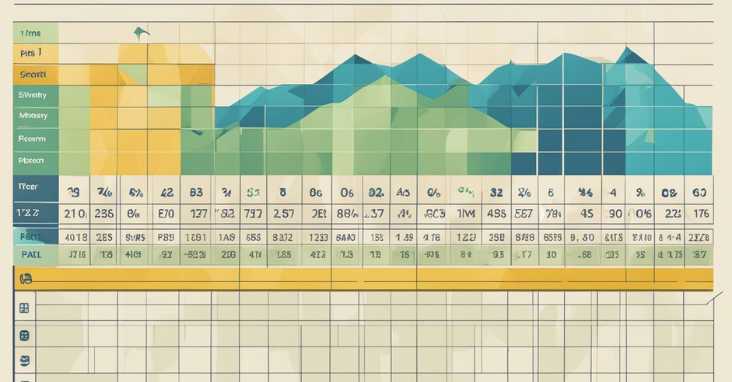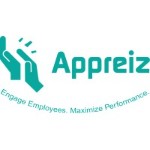How to boost morale in the workplace with employee recognition ideas? Boost morale with creative recognition: personalized awards, shout-outs, growth opportunities, and team events. Make appreciation a culture!
Employee recognition ideas are a crucial aspect of any business. It can help to improve staff morale, increase productivity, and foster a positive company culture. However, developing an effective recognition program can be challenging, and finding new and creative ways to recognize employees can be even more difficult. In this article, we will explore a variety of employee recognition ideas that managers can use to show their appreciation for their staff.

One of the most important things to understand when it comes to employee recognition ideas is that it is not just about giving out rewards and incentives. While these things can be important, recognition is also about creating a culture of appreciation and making employees feel valued and respected. This can be achieved through simple gestures such as saying thank you, providing opportunities for professional development, or giving employees more autonomy in their work.
When it comes to developing a recognition program, there are many different factors to consider. This can include things like the company’s values and culture, the size of the organization, and the budget available for recognition initiatives. By taking the time to understand these factors and developing a comprehensive recognition strategy, managers can ensure that their employees feel valued and appreciated, which can lead to increased job satisfaction and improved performance.
Key Takeaways
- Employee recognition ideas are not just about rewards and incentives, but also about creating a culture of appreciation.
- Developing an effective recognition program requires consideration of factors such as company values, culture, and budget.
- By implementing creative recognition ideas and strategies, managers can improve staff morale and foster a positive company culture.
Understanding Employee Recognition Ideas
Importance of Recognition in the Workplace
Employee recognition ideas are an essential aspect of any successful business. It is a way of acknowledging employees’ hard work and dedication, which in turn, motivates them to perform better. Recognition can come in different forms, including verbal praise, bonuses, promotions, and awards.
Recognition is essential in the workplace because it helps to foster a positive company culture. When employees feel appreciated and valued, they are more likely to be engaged and committed to their work. This, in turn, leads to increased productivity and higher levels of job satisfaction.
The Impact of Recognition on Employee Morale
Employee morale is a critical factor in any business’s success. When employees are happy and satisfied, they are more likely to be productive and engaged in their work. Recognition plays a significant role in boosting employee morale.
Studies have shown that employees who feel recognized and appreciated are more likely to be satisfied with their jobs and less likely to leave the company. This, in turn, leads to lower turnover rates and higher retention rates.
Different Types of Recognition
There are many different types of recognition that companies can use to acknowledge their employees’ hard work and dedication. Some common types of employee recognition ideas include:
- Verbal praise: A simple “thank you” or “well done” can go a long way in making employees feel appreciated.
- Bonuses: Monetary bonuses are a popular form of recognition that can motivate employees to work harder.
- Promotions: Promoting employees to higher positions is a way of recognizing their hard work and dedication.
- Awards: Awards such as “Employee of the Month” or “Top Salesperson” can motivate employees to perform better.
It is essential to choose the right type of employee recognition ideas. Different employees may respond better to different forms of recognition. Therefore, it is crucial to understand your employees’ needs and preferences.
According to Forbes, companies that have a recognition program in place have a 31% lower voluntary turnover rate than companies that do not have one. Therefore, it is essential to implement a recognition program to improve employee engagement, retention, and morale.
Developing a Recognition Program
Employee recognition ideas programs have become an essential part of any organization’s culture. A well-designed recognition program can motivate employees, increase productivity, and improve job satisfaction. Developing a successful recognition program requires careful planning and execution. In this section, we will discuss the key elements of a successful program, steps to create an effective recognition program, and incorporating peer recognition.
Key Elements of a Successful Program
A successful recognition program should have the following key elements:
- Leadership support: The program must have the support of the organization’s leadership to ensure its success.
- Clear objectives: The program should have clear objectives and goals that align with the organization’s overall mission and values.
- Inclusive: The program should be inclusive and employee recognition ideas at all levels of the organization.
- Timely: Recognition should be given in a timely manner to reinforce the desired behavior.
- Consistent: The program should be consistent and fair in recognizing employees for their contributions.
- Meaningful: Recognition should be meaningful and personalized to the employee’s contribution.
Steps to Create an Effective Recognition Program
Creating an effective recognition program involves the following steps:
- Identify the objectives and goals of the program: The program’s objectives and goals should align with the organization’s overall mission and values.
- Determine the type of recognition: The program should include both formal and informal recognition.
- Decide on the criteria for recognition: The criteria for recognition should be clear and consistent.
- Develop the recognition process: The recognition process should be simple and easy to follow.
- Communicate the program: The program should be communicated to all employees to ensure its success.
- Evaluate the program: The program should be evaluated regularly to ensure its effectiveness.
Incorporating Peer Recognition
Other employee recognition ideas are peer recognition is an essential component of any recognition program. It fosters a positive work environment and promotes teamwork. Incorporating peer recognition involves the following steps:
- Encourage peer-to-peer recognition: Employees should be encouraged to recognize their peers for their contributions.
- Provide tools for peer recognition: The organization should provide tools such as a recognition platform to facilitate peer recognition.
- Recognize peer recognition: Peer recognition should be recognized and celebrated to reinforce the desired behavior.
In conclusion, developing a successful recognition program requires careful planning and execution. A well-designed employee recognition ideas programs, increase productivity, and improve job satisfaction. Organizations should strive to create an inclusive, timely, consistent, and meaningful recognition program that aligns with their overall mission and values.
Recognition Ideas for Managers
As a manager, recognizing and rewarding employee recognition ideas is a crucial aspect of keeping them motivated and engaged. Here are some creative recognition tactics that managers can use to show appreciation to their team members.
Creative Recognition Tactics
Managers can get creative with their employee recognition ideas tactics to make them more memorable and meaningful. Some ideas include:
- Surprise celebrations: Managers can organize surprise celebrations for employees who have achieved personal or team goals. This can be as simple as bringing in cake or organizing a team lunch.
- Personalized thank you notes: Managers can write personalized thank you notes to employees, highlighting their specific contributions and accomplishments.
- Fun awards: Managers can create fun awards for employees, such as “Most Creative Thinker” or “Best Team Player”. These awards can be accompanied by small prizes, such as gift cards or company swag.
Using Public Praise and Awards
Public recognition can be a powerful motivator for employee recognition ideas. Managers can use the following strategies to publicly praise and recognize their team members:
- Shoutouts in team meetings: Managers can give shoutouts to employees who have gone above and beyond in team meetings. This can be a great way to show appreciation in front of the entire team.
- Employee of the month awards: Managers can create an “Employee of the Month” award and recognize outstanding employees in a company-wide email or newsletter.
- Public recognition events: Managers can organize public recognition events, such as award ceremonies or team dinners, to celebrate the achievements of their team members.
Personalized Recognition Strategies
Personalized recognition strategies can help managers show employees that they are valued as individuals. Here are some employee recognition ideas:
- Flexible work arrangements: Managers can offer flexible work arrangements, such as telecommuting or adjusted work hours, to employees who have achieved personal milestones or are going through a difficult time.
- Professional development opportunities: Managers can offer professional development opportunities, such as attending conferences or taking courses, to employees who have shown a commitment to their personal growth.
- Personalized gifts: Managers can give personalized gifts, such as a book on a topic the employee is interested in or a gift card to their favorite restaurant, to show appreciation for their individual contributions.
Overall, there are many creative and personalized recognition ideas that managers can use to show appreciation to their team members. By recognizing and rewarding employees, managers can create a positive work environment and improve employee morale and engagement.
Here is a link to an external resource with more low-cost employee recognition ideas.
Celebrating Milestones and Achievements

Employee recognition ideas, achievements and milestones is a great way to show appreciation for their hard work and dedication. Celebrating these milestones can boost employee morale, increase job satisfaction, and improve retention rates. Here are some ideas to celebrate employee milestones and achievements:
Recognizing Work Anniversaries
Work anniversaries are a great opportunity to recognize an employee’s loyalty and commitment to the company. Employers can celebrate work anniversaries by giving employees a personalized gift, hosting a company-wide celebration, or offering additional time off. According to a survey by SHRM, the most common recognition for work anniversaries is a personalized gift, such as a plaque or certificate.
Honoring Personal Milestones
Personal milestones, such as the birth of a child or a wedding, are important events in an employee’s life. Employers can show support and appreciation by offering paid time off or a personalized gift. For example, a company can offer a gift card to a local restaurant for a new parent or a gift certificate for a spa day for a newlywed.
Team Accomplishments and Project Completion
Celebrating team accomplishments and project completion is an excellent way to recognize the hard work and dedication of the entire team. Employers can offer a team lunch or dinner, a group outing, or a personalized gift. It is important to recognize the team’s hard work and dedication to the project’s success.
When celebrating milestones and achievements, it is essential to keep in mind the employee’s interests and preferences. Employers can use employee recognition software to track milestones and ensure that recognition is consistent and fair. For more information on employee recognition ideas, check out this article.
Rewards and Incentives

Employee recognition ideas are important aspects of keeping employees motivated and engaged. One effective way to recognize employees is by offering rewards and incentives. Rewards and incentives can come in many forms, from monetary rewards to small gestures and spontaneous treats. Here are some employee recognition ideas for rewards and incentives that can help you recognize and motivate your employees.
Gifts and Monetary Rewards
Gifts and monetary rewards are popular ways of employee recognition ideas. A gift card to a favorite store or restaurant is a great way to show appreciation for a job well done. Cash bonuses are also a popular option, as they provide employees with the flexibility to use the money however they see fit. Additionally, offering paid time off or a day off as a reward can be a great way to show appreciation for hard work.
Experiential and Developmental Incentives
Experiential and developmental incentives are a great way to help employees grow and develop professionally. Offering opportunities for professional development, such as attending a conference or taking a training course, can help employees gain new skills and knowledge. Additionally, offering experiential incentives, such as tickets to a sporting event or a concert, can be a great tips for employee recognition ideas and provide them with a unique experience.
Small Gestures and Spontaneous Treats
Small gestures and spontaneous treats can go a long way in employee recognition ideas. Providing a catered meal or snacks for the office can be a great way to show appreciation for hard work. Additionally, providing small gifts or treats, such as a coffee or a snack, can be a great way to brighten an employee’s day.
When choosing rewards and incentives, it is important to consider what will motivate and engage your employees. By offering a variety of rewards and incentives, you can ensure that you are recognizing and motivating your employees in a way that works for them.
For more ideas on rewards and incentives via employee recognition ideas, check out this resource from the Society for Human Resource Management.
Integrating Recognition into Company Culture

Employee recognition ideas an essential aspects of building a positive work environment and improving employee engagement. To create a culture of recognition, it is important to integrate recognition into the company culture. This means making employee recognition ideas a regular part of the workplace experience, rather than just a one-time event.
Fostering a Culture of Recognition
Fostering a culture of recognition involves creating an environment where employees feel valued and appreciated for their contributions. This can be achieved by implementing employee appreciation programs, such as employee of the month awards or peer recognition programs. These programs should be designed to recognize employees for their hard work, dedication, and achievements.
In addition to formal recognition programs, it is important to encourage informal recognition as well. This can include simple gestures such as saying thank you or providing positive feedback. By fostering a culture of recognition, employees will feel more motivated and engaged in their work.
Role of Leadership in Employee Recognition
Leadership plays a critical role in employee recognition. Managers and supervisors should be trained to recognize and appreciate their employees regularly. They should also be given the tools and resources necessary to implement recognition programs effectively.
Leadership should also lead by example. When employees see their leaders recognizing and appreciating their colleagues, they are more likely to follow suit. By making recognition a part of the company culture, employees will feel more connected to their work and their colleagues.
Ensuring Consistency and Fairness
To ensure that recognition is a regular part of the workplace experience, it is important to establish consistent and fair recognition programs. This means setting clear criteria for recognition and ensuring that the criteria are applied fairly to all employees.
To achieve this, it is important to involve employees in the development of recognition programs. This can include soliciting feedback from employees on what they would like to see in a recognition program and involving employees in the selection process.
By integrating recognition into the company culture, employees will feel more valued and appreciated for their contributions. This will lead to increased employee engagement, improved morale, and a more positive work environment.
Here is a resource to help design and implement an employee recognition program.
Leveraging Technology for Recognition

In today’s digital age, technology has become a crucial tool for employee recognition. By leveraging technology, companies can recognize and reward their employees in a more efficient and effective manner. Here are some ways companies can use technology for employee recognition:
Employee Recognition Platforms
Employee recognition platforms are software tools that allow companies to recognize and reward their employees for their hard work and achievements. These platforms provide a centralized location for managers and employees to give and receive recognition. They also provide analytics and reporting to help companies track the effectiveness of their recognition programs.
One example of an employee recognition platform is Bonusly, which allows employees to give each other micro-bonuses that can be redeemed for rewards. Bonusly integrates with Slack, a popular communication tool, making it easy for employees to recognize each other in real-time.
Social Media and Digital Acknowledgment
Social media has become a powerful tool for employee recognition. Companies can use social media to publicly acknowledge their employees’ achievements and share their success stories with a wider audience. This can help boost employee morale and engagement.
Digital acknowledgment can also take the form of personalized emails, videos, or messages from senior leadership. These messages can be shared on company intranets or other internal communication channels.
Virtual Celebrations for Remote Teams
With the rise of remote work, virtual celebrations have become an important way for companies to recognize and celebrate their employees’ achievements. Virtual celebrations can take many forms, such as video conferences, virtual parties, or online team-building activities.
One example of a virtual celebration platform is Donut, which integrates with Slack to help remote teams connect and celebrate together. Donut randomly pairs team members for virtual coffee chats or lunch breaks, creating opportunities for remote employees to build relationships and celebrate their successes together.
By leveraging technology, companies can create more engaging and effective employee recognition programs. Whether it’s through employee recognition platforms, social media, or virtual celebrations, technology can help companies recognize and reward their employees in a more meaningful way.
Here is an external resource with more information on employee recognition platforms.
Measuring the Effectiveness of Recognition Programs

Employee recognition programs are a vital aspect of any organization’s strategy to retain and engage its workforce. However, it is equally important to measure the effectiveness of these programs to ensure that they are delivering the desired outcomes.
Tracking Employee Engagement and Retention
One of the primary indicators of the effectiveness of an employee recognition program is the level of employee engagement and retention. A well-designed recognition program can positively impact employee engagement, leading to higher retention rates. Employers can track employee engagement and retention through various metrics such as turnover rates, absenteeism, and productivity levels.
Surveys and Feedback Loops
Surveys and feedback loops are an excellent way to measure the effectiveness of an employee recognition program. These tools provide valuable insights into employee satisfaction levels, which can be used to fine-tune the program’s design and implementation. Employers can use surveys to gather feedback from employees on the recognition program’s effectiveness, relevance, and impact on their work experience.
Analyzing Business Outcomes and ROI
Another way to measure the effectiveness of an employee recognition program is to analyze its impact on business outcomes and ROI. Employers can use metrics such as revenue growth, customer satisfaction, and employee productivity to evaluate the program’s effectiveness. By analyzing the ROI of the recognition program, employers can determine whether the program is worth the investment and whether it aligns with the organization’s overall business objectives.
To learn more about measuring the effectiveness of employee recognition programs, visit this resource by the Society for Human Resource Management.
Continuous Improvement of Recognition Practices

To ensure that recognition practices remain effective, it is important to continuously improve and adapt them to changing workforce dynamics. This section presents some ideas for continuous improvement of recognition practices.
Adapting to Changing Workforce Dynamics
As the workforce becomes more diverse and multigenerational, recognition practices need to adapt to meet the needs and expectations of all employees. For example, older employees may prefer more traditional forms of recognition, while younger employees may prefer more frequent and informal recognition. To ensure that recognition practices are inclusive and effective for all employees, it is important to regularly review and update them.
Soliciting Employee Input for Recognition Ideas
One effective way to improve recognition practices is to solicit employee input for recognition ideas. This can be done through surveys, focus groups, or suggestion boxes. By involving employees in the recognition process, they feel valued and appreciated, and the recognition practices become more meaningful and relevant to them.
Recognition Training for Managers
To ensure that recognition practices are consistently applied and effective, it is important to provide recognition training for managers. This training should cover the importance of recognition, how to give effective recognition, and how to tailor recognition to individual employees. By providing managers with the tools and knowledge to effectively recognize and appreciate their employees, the recognition practices become more consistent and impactful.
In summary, continuous improvement of recognition practices is essential for maintaining employee engagement and satisfaction. By adapting to changing workforce dynamics, soliciting employee input for recognition ideas, and providing recognition training for managers, recognition practices can be made more effective and meaningful for all employees. For more information on continuous improvement of recognition practices, check out this article by the Society for Human Resource Management.
Frequently Asked Questions

What are some creative ways to recognize employee achievements?
Recognizing employee achievements is a crucial aspect of maintaining a motivated and engaged workforce. Creative ways to recognize employee achievements include offering flexible work arrangements, organizing team-building activities, providing opportunities for professional development, and offering personalized rewards. Additionally, public recognition through company-wide announcements or newsletters can also be an effective way to show appreciation for an employee’s hard work and dedication.
How can a company implement meaningful employee recognition programs?
Implementing a meaningful employee recognition program involves identifying key performance indicators, setting clear goals and objectives, and establishing a system for tracking and measuring progress. Companies should also involve employees in the process by soliciting feedback and suggestions for improvement. A comprehensive employee recognition program should be tailored to the needs and preferences of the workforce, and should be regularly evaluated and updated to ensure its effectiveness.
What are effective methods to recognize and reward employees who exceed expectations?
Effective methods to recognize and reward employees who exceed expectations include offering bonuses or incentives, providing opportunities for career advancement, offering additional time off, and providing public recognition. Companies should also consider offering personalized rewards that align with the employee’s interests and values.
In what ways can employee recognition be made impactful on a limited budget?
Employee recognition can be impactful on a limited budget by focusing on low-cost or no-cost options such as offering public recognition, providing opportunities for professional development, and offering personalized rewards. Additionally, companies can leverage technology to create virtual recognition programs and online communities that allow employees to share their achievements and receive feedback from their peers.
How can remote workers be effectively recognized for their contributions?
Recognizing remote workers for their contributions requires a different approach than traditional in-office recognition programs. Companies can leverage technology to create virtual recognition programs that allow remote workers to share their achievements and receive feedback from their peers. Additionally, companies can offer personalized rewards such as gift cards or online subscriptions that can be easily delivered to remote workers.
What are examples of unique recognition practices that companies have successfully adopted?
Companies have successfully adopted unique recognition practices such as offering sabbaticals, organizing volunteer opportunities, and providing wellness programs. For example, Patagonia offers paid sabbaticals to employees who have been with the company for five years, while Google offers employees the opportunity to volunteer for up to six months with a nonprofit organization. These unique recognition practices not only show appreciation for employees’ hard work and dedication, but also contribute to a positive company culture and employee engagement. For more information on employee recognition ideas, check out this article from the Society for Human Resource Management.













